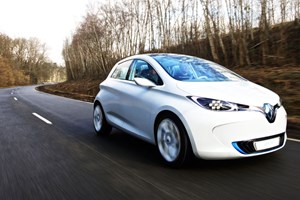Honda Siel Cars India Limited introduced Civic Hybrid in the Indian automobile industry in June 2008. The luxurious sedan is the first hybrid ever launched in the country. An inescapable exhilaration will be felt the moment you turn on the ignition of this car. Honda Civic Hybrid is definitely one of the most environment friendly cars seen on Indian roads. Powered by a high-tech engine, the automobile boasts of stunning looks and good fuel efficiency.
Engine
Honda Civic Hybrid is powered by 1.3L i-VTEC (Variable Valve Timing and Lift Electronic Control) engine combined with a compact and efficient electric motor - IMA (Integrated Motor Assist) system. The hybrid system provides three stages of valve timing (low-speed, high-speed, and valve-deactivated mode). As soon as you apply brakes, the "idle stop" feature occurs automatically, making the engine stop temporarily. When brake pedal is released, the engine restarts on its own. This way, a good amount of fuel is saved and emissions are minimized.
Design And Comfort
The powerful engine, nimble handing and futuristic technology of Honda Civic Hybrid are wrapped up in a sophisticated design. The car's frontage deserves special mention - it is adorned with clear lens fog lamps, beautiful headlights, and a sleek front grille. In the rear side is an aerodynamic trunk spoiler, which adds to the presence of the automobile. The unique 15-inch, lightweight alloy wheels add a stylish touch to the luxurious sedan. As far as comfort is concerned, people will forget the outside world, because it is so relaxing to take a ride in Civic Hybrid.
Interiors
Clad in top-quality leather, the seats of Honda Civic Hybrid are very comfortable to sit on. The sporty cockpit cabin of the car is equipped with high-tech audio system that has been integrated on the dash. Dual Zone Automatic Climate Control System facilitates uniform cooling throughout the cabin. Apart from this, Civic Hybrid also comes equipped with vanity mirrors as well as front and rear center armrest. Audio controls are mounted on the steering.
Ride And Handling
Honda Civic Hybrid comes equipped with Continuously Variable Transmission (CVT), which blends the effortlessness of an automatic with the efficiency of a manual transmission. CVT is combined with the Drive-by-wire Throttle System, in order to provide the most efficient drive ratio possible, depending on the torque load. The electric motor of the car assists the gasoline engine during acceleration and stores energy during braking and deceleration.
Safety
Honda Civic Hybrid has a number of safety features to boast of. These include specially designed front dual SRS air bags, G-CON technology, Antilock Braking System (ABS), and active headrest. G-CON technology is an advanced passive safety feature, which shields the passengers of the car by providing a survival zone in case of an unavoidable collision.
Variants, Price And Color
Available in two colors - Premium Pearl White and Alabaster Silver, Honda Civic Hybrid is worth Rs 21.5 lakh (approx).
| Overview | |
| Model | Civic Hybrid |
| Body Type | Sedan |
| Number Of Doors | 5 |
| Seating Capacity | 5 |
| Fuel Capacity | 50 Litres |
| Dimensions | |
| Length | 4545 mm |
| Width | 1750 mm |
| Height | 1450 mm |
| Wheelbase | 2700 mm |
| Ground Clearance | 165 mm |
| Minimum Turning Radius | 5.4 m |
| Weight | |
| Kerb Weight | 1290 kg |
| Engine | |
| Type | SOHC iVTEC + IMA |
| Number Of Cylinders | -- |
| Displacement | 1339 cc |
| Transmission | (Automatic) CVT |
| Max. Power | 95 PS @ 6000 rpm |
| Max. Torque | 121.5 PS @ 4600 rpm (engine) 103 Nm @ 0 to 1160 rpm (electric motor) |
| Suspension | |
| Front Suspension | McPherson coil spring |
| Rear Suspension | Double wishbone |
| Brake | |
| Front | Ventilated Disc |
| Rear | Disc |
| Tyre Size | 195/65 R 15 Radial & Tubeless |


















